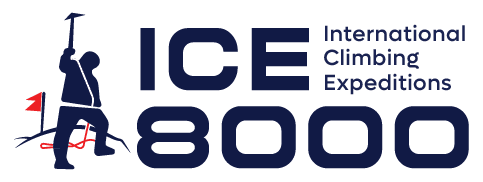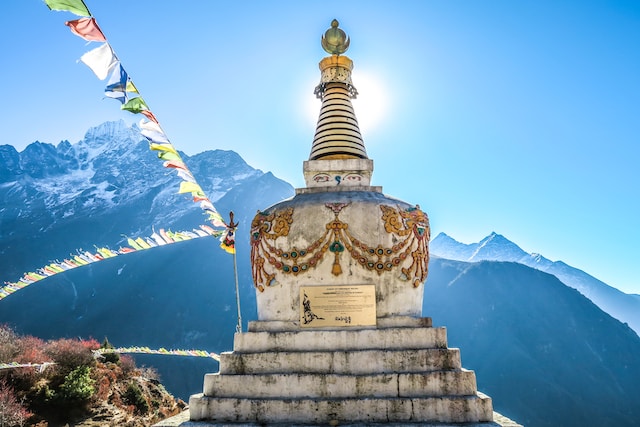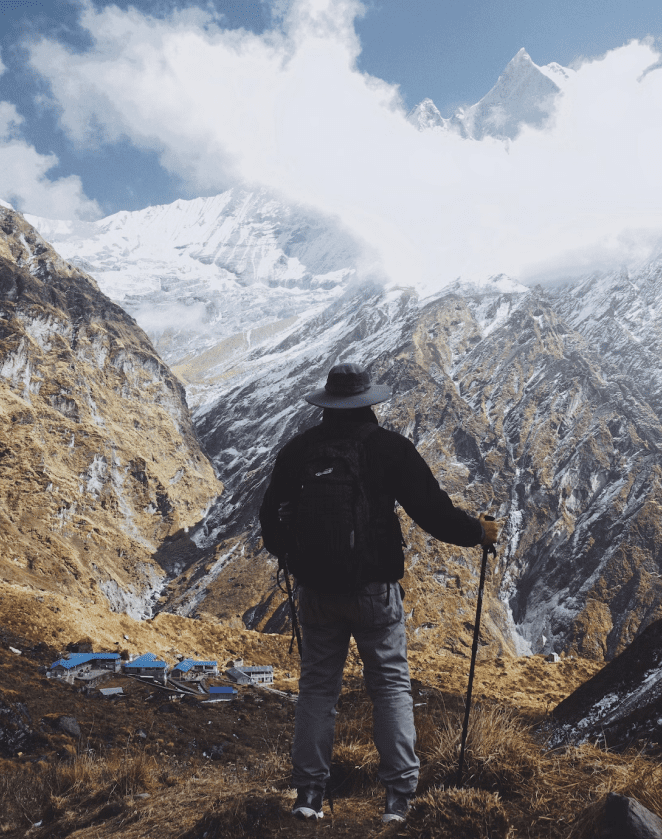PREVIOUS EXPERIENCE/FITNESS
While not technically demanding, the climb requires physical stamina due to long days and exposed sections. This journey is tailored for adept climbers aiming to ascend Annapurna or gain expertise for future higher peaks. An optimal background includes familiarity with Alpine PD+/AD routes, ability to tackle Scottish grade 1/ll winter routes, and previous altitude exposure of at least 4,800 meters.
A Typical Day on the Trek
Embark on your day around 7 am, preparing your gear and relishing a hearty breakfast before departing camp amidst cool temperatures. Trek at a leisurely pace, soaking in the scenery, mingling with locals, and staying hydrated. Lunch usually unfolds against scenic backdrops beside the trail, with most days culminating in reaching the overnight camp by early afternoon—a rewarding time for a cup of tea. This affords an hour or so to rest or explore before indulging in a three-course dinner, reflecting the remarkable culinary creativity of locals even in remote settings.
WEATHER CONDITIONS
Experience the Post and Pre-monsoon climate from October to mid-December. April to May typically brings fair, dry, and stable conditions. Daytime temperatures are pleasantly warm in the valleys (20-30°C), while high on Baruntse, they range from cool to very cold, especially with wind chill. Nights can be quite cold (even possibly as low as -30°C). Hence, having a well-insulated sleeping bag (-30°C), expedition-grade down jacket, and high-quality down mitts is essential.
Catering Arrangements:
The culinary offerings during the trek and at the Base Camp are exceptional and thoughtfully designed to counteract the common altitude-induced loss of appetite.
Breakfast comprises nourishing porridge and cereal followed by eggs in various forms along with bread or chapattis complemented by spreads like jam, honey, and peanut butter. Lunch begins with refreshing juice and encompasses items like chips, rice, lentils, vegetables, salad, sandwiches, beans, tinned fish, and meat.
Desserts often feature fresh or tinned fruits accompanied by tea. The dinner ritual commences with soup, often seasoned with garlic to aid acclimatization, served with poppadums, popcorn, or prawn crackers.
The main course traverses local-style dishes like Dal Bhat and Yak stew to western delights such as yak burgers, chips, pasta, and even pizza!
The dessert offerings, including treats like apple pie, cake, and custard, ensure you won’t go hungry. During the mountain ascent, dehydrated meals are supplemented with chocolate, muesli bars, cheese, nuts, and salami.
Important – The Small Print:
It’s important to note that flights to and from Lukla can be subject to delays due to weather conditions. Patience and a good book are recommended. In case of an overnight delay, bed and breakfast accommodation is provided. In cases of extended delays, optional helicopter flights might be offered at an extra cost.
MISSED INTERNATIONAL FLIGHTS
To accommodate potential bad weather, an extra day is included in the itinerary. In the rare event of longer delays, we can rebook your international flight with additional costs that may apply. Changes to tickets depend on availability and ticket class, possibly requiring upgrades and flexibility with return dates. Any additional payments would need to be settled in Kathmandu (credit card payments accepted).
RESPONSIBLE TOURISM
Our commitment to responsible tourism extends to employing local staff, reducing deforestation by using electricity or solar-powered lodges for showers, and mindful waste disposal. Washing is facilitated with warm water or ‘wet ones.’ While we encourage the disposal of burnable waste at lodges, we urge travelers to return items such as bottles and batteries to Kathmandu. We advocate for avoiding plastic bottles by using iodine tablets and a refillable water bottle for consuming local pumped water. When purchasing soft drinks, opting for glass bottles that can be recycled is recommended.
ALTITUDE
Our meticulously planned itineraries provide ample time for acclimatization. The key to avoiding altitude-related issues lies in gradual pacing, steady walking, and staying well-hydrated. Our expedition leader will provide a fitting orientation upon your arrival.
USEFUL TIPS
Wearing your boots during the flight is a smart precaution in case your main luggage gets delayed. While most items can be replaced, comfortable and well-worn boots can be challenging to substitute.
EQUIPMENT
A comprehensive equipment list is furnished upon booking. Specialized items like sleeping bags and down jackets can be either rented or purchased.
BAGGAGE
For comfort, we recommend packing light. While airlines generally have a baggage allowance of 20kg and the Lukla flight permits 15kg, you’ll be wearing your boots and one set of trekking clothes. Some items can be stored at the hotel for your return.
VISAS AND PERMITS
US/UK citizens and most EU nationals can obtain visas upon arrival. Travelers from other countries should verify the requirements with their respective embassies. Passports must remain valid for at least six months following the trip’s conclusion.
LOCAL EXPENSES
The majority of meals are included; details can be found in the provided key. Participants are responsible for beverage expenses and hotel meals, offering flexibility in dining choices.
CURRENCY
Nepalese Rupee is the local currency. British Pounds Sterling, Euros, and US Dollars can be easily exchanged in Kathmandu. ATMs are available in Kathmandu for your convenience.
TIPPING
Tipping is customary and woven into everyday life. Generally, we tip our local staff as a collective gesture. It’s also customary to contribute around 1000 Nepalese Rupees to the Puja or mountain blessing—a significant aspect of Himalayan climbing.
Chitwan Wildlife Safari (plus 4 days):
Cap off your trek with a three-day wildlife safari, which includes a jeep safari, jungle walk, river canoe trip, elephant ride, and an immersive cultural program aimed at encountering rhinos and the illustrious Bengal tiger.



